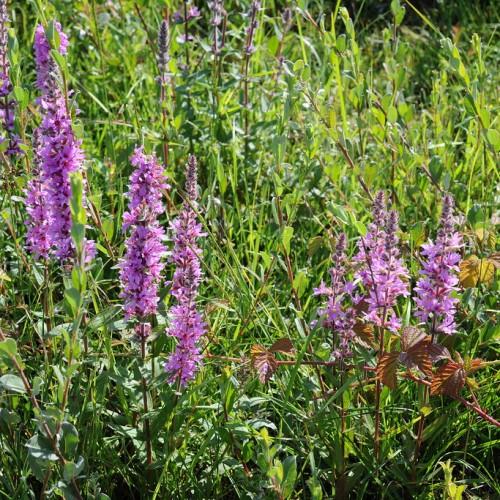
purple loosestrife
Lythrum salicaria
Cycle:
Herbaceous Perennial
Watering:
Frequent
Hardiness Zone:
4 - 9
Flowers:
Flowers In Summer
Sun:
Full sun, Part sun/part shade
Soil:
Acidic, Bog, Humus rich
Fruits:
Fruits In Summer Ready In Summer
Leaf:
Yes
Growth Rate:
High
Maintenance:
Moderate
Salt Tolerant:
Yes
Invasive:
Yes
Care Level:
Medium
watering
Purple loosestrife should be watered once per week, providing 1–2 inches of water. Water the plants slowly until the entire root zone is saturated. Avoid overhead watering, as this can cause fungal diseases. In periods of extremely dry weather, up to 2 inches of additional water per week may be needed to prevent wilting. Because it is a wetland species, it may do best with its roots in the mud or shallow water. if the soil is very dry, soaking the plant roots with about 5 cm of standing water is beneficial.
sunlight
Purple loosestrife (Lythrum salicaria) is an herbaceous perennial native to parts of Europe, Asia, and North America. This plant grows best in full sun to partial shade in moist soils. It prefers morning sun and afternoon shade; too much sun can cause leaf scorch, while too little sun can weaken the stems. As a general rule, purple loosestrife will prosper with at least 6 hours of sunlight per day.
pruning
Purple loosestrife (Lythrum salicaria) should be pruned in late winter or early spring, before new growth begins. A pruning schedule of late February to mid-March is generally recommended for this species. Pruning should involve removing dead or weak stems at the base, which will help promote healthy and vigorous growth. It is also beneficial to prune off any flower spikes that have developed, as this will ensure more energy is put into producing strong and healthy foliage. When pruning back, make sure that at least 2 to 3 sets of healthy leaves remain at the top of each stem, as this will help ensure an attractive look and a continued overall growth of the plant.
